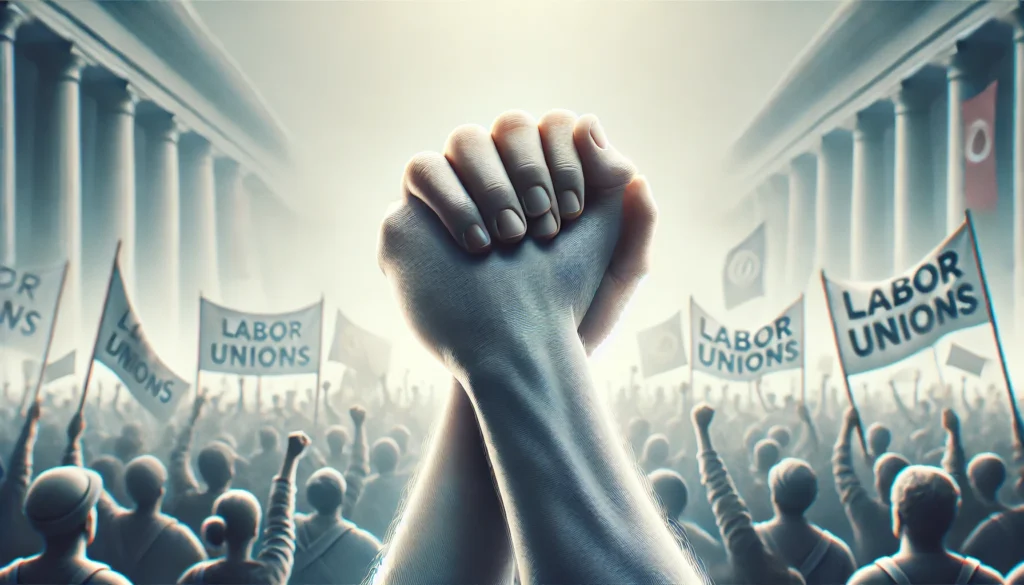The roots of labor unions can be traced back to the Industrial Revolution of the 18th and 19th centuries. This period marked a significant shift in working conditions as factories and mass production became the norm. Workers faced long hours, dangerous conditions, and low wages. The need for collective action became apparent as individuals found themselves powerless against the might of industrial employers.
In the United States, the first recorded strike occurred in 1768 when New York journeymen tailors protested a wage reduction. This event set the stage for future organized labor movements. By the early 19th century, labor unions began to form in various industries, with skilled craftsmen leading the way.
Formation of National Labor Organizations
The mid-19th century saw the emergence of national labor organizations. In 1866, the National Labor Union (NLU) was founded, representing the first attempt to create a national labor federation in the United States. Although short-lived, the NLU paved the way for future organizations.
The Knights of Labor, founded in 1869, gained significant influence in the 1880s. This organization was notable for its inclusion of both skilled and unskilled workers, as well as its advocacy for social and economic reform beyond just workplace issues.
Key Milestones in Labor Union History
The Rise of the American Federation of Labor (AFL)
In 1886, the American Federation of Labor (AFL) was established under the leadership of Samuel Gompers. The AFL focused on organizing skilled workers and advocating for better wages, working conditions, and hours. This “pure and simple” unionism approach proved effective in gaining concessions from employers.
The Pullman Strike of 1894
The Pullman Strike of 1894 was a turning point in American labor history. Workers at the Pullman Palace Car Company in Chicago went on strike to protest wage cuts and poor working conditions. The strike quickly spread across the country, crippling the national railway system. President Grover Cleveland’s decision to use federal troops to break the strike marked a significant moment in labor-government relations.
The Formation of the Congress of Industrial Organizations (CIO)
In 1935, the Committee for Industrial Organization (later renamed the Congress of Industrial Organizations) was formed. The CIO focused on organizing workers in mass production industries, regardless of skill level. This approach differed from the AFL’s craft unionism and led to rapid growth in union membership.
Table 1: Key Events in Early Labor Union History
| Year | Event |
|---|---|
| 1768 | First recorded strike in the U.S. (New York journeymen tailors) |
| 1866 | Formation of the National Labor Union |
| 1869 | Founding of the Knights of Labor |
| 1886 | Establishment of the American Federation of Labor |
| 1894 | Pullman Strike |
| 1935 | Formation of the Congress of Industrial Organizations |
Legal Framework and Government Involvement
Early Labor Laws
The late 19th and early 20th centuries saw the introduction of various labor laws in response to growing union activity and public concern over working conditions. The Sherman Antitrust Act of 1890, while primarily aimed at regulating business monopolies, was initially used to suppress union activities. However, the Clayton Antitrust Act of 1914 explicitly exempted labor unions from antitrust laws, providing legal protection for organized labor.
The New Deal Era
The Great Depression of the 1930s led to a significant shift in government policy towards labor unions. President Franklin D. Roosevelt’s New Deal programs included several measures that strengthened the position of labor unions:
- The National Industrial Recovery Act of 1933 (later declared unconstitutional)
- The National Labor Relations Act (Wagner Act) of 1935
- The Fair Labor Standards Act of 1938
The Wagner Act, in particular, was a landmark piece of legislation that guaranteed workers the right to organize, engage in collective bargaining, and strike. It also established the National Labor Relations Board to enforce these rights.
Post-World War II Developments
The immediate post-World War II period saw both advances and setbacks for labor unions. The Taft-Hartley Act of 1947 placed some restrictions on union activities, including prohibiting closed shops and allowing states to pass “right-to-work” laws. Despite these challenges, union membership reached its peak in the 1950s, with about one-third of American workers belonging to a union.
Strategies and Tactics of Labor Unions
Collective Bargaining
Collective bargaining is the cornerstone of labor union activity. This process involves negotiations between union representatives and employers to determine wages, working conditions, and other terms of employment. The ability to bargain collectively gives workers a stronger voice in their workplace and has led to significant improvements in working conditions over time.
Strike Actions
Strikes have been a powerful tool in the labor union arsenal. By withholding labor, workers can exert pressure on employers to meet their demands. Notable strikes in U.S. history include:
- The Homestead Strike of 1892
- The Bread and Roses Strike of 1912
- The Steel Strike of 1919
- The General Motors Sit-Down Strike of 1936-1937
Political Activism
Labor unions have long been involved in political activism, supporting candidates and policies that align with workers’ interests. This involvement has led to the passage of numerous laws benefiting workers, including:
- The Occupational Safety and Health Act of 1970
- The Family and Medical Leave Act of 1993
- Various minimum wage laws and workplace discrimination protections
Impact of Labor Unions on Workers’ Rights
Wage and Benefit Improvements
Labor unions have played a crucial role in securing better wages and benefits for workers. Union members typically earn higher wages than non-union workers in similar jobs. Additionally, unions have been instrumental in establishing and protecting benefits such as:
- Health insurance
- Paid vacation and sick leave
- Retirement plans
- Overtime pay
Workplace Safety
Unions have been at the forefront of advocating for improved workplace safety. Their efforts have led to the implementation of safety regulations and the creation of agencies like the Occupational Safety and Health Administration (OSHA) in 1971. These advancements have significantly reduced workplace injuries and fatalities.
Work-Life Balance
The concept of work-life balance owes much to labor union advocacy. Unions have fought for:
- Shorter work weeks
- Paid holidays
- Family and medical leave
- Restrictions on mandatory overtime
These gains have improved the quality of life for workers across various industries.
Challenges Faced by Labor Unions
Globalization and Outsourcing
The rise of globalization in the late 20th and early 21st centuries has presented significant challenges to labor unions. The ability of companies to outsource jobs to countries with lower labor costs has weakened unions’ bargaining power in many industries.
Technological Advancements
Automation and technological advancements have led to job losses in many traditional union strongholds, such as manufacturing. This has forced unions to adapt their strategies and focus on organizing in new sectors.
Changing Political Climate
The political landscape has posed challenges for labor unions in recent decades. The rise of right-to-work laws, which prohibit mandatory union membership as a condition of employment, has weakened union power in many states.
Table 2: Union Membership Rates in the United States
| Year | Percentage of Workers in Unions |
|---|---|
| 1950 | 30.0% |
| 1970 | 27.4% |
| 1990 | 16.1% |
| 2010 | 11.9% |
| 2020 | 10.8% |
Labor Unions in the 21st Century
Adapting to New Industries
As traditional manufacturing jobs have declined, unions have sought to organize workers in new sectors. This includes:
- Service industries
- Healthcare
- Technology
- Gig economy workers
The efforts to unionize companies like Amazon and Starbucks in recent years demonstrate this shift in focus.
Addressing Income Inequality
Labor unions have taken a leading role in addressing growing income inequality. They have advocated for policies such as:
- Raising the minimum wage
- Implementing progressive taxation
- Expanding access to affordable healthcare and education
Embracing Diversity and Inclusion
Modern labor unions have recognized the importance of diversity and inclusion in their ranks. Many unions have established programs and initiatives to:
- Promote leadership opportunities for women and minorities
- Address issues of workplace discrimination
- Advocate for immigrant workers’ rights
International Perspective on Labor Unions
Global Labor Standards
Labor unions have played a crucial role in establishing international labor standards. The International Labour Organization (ILO), founded in 1919, works to promote workers’ rights globally. Key ILO conventions address issues such as:
- Freedom of association
- Collective bargaining rights
- Elimination of forced labor
- Abolition of child labor
- Non-discrimination in employment
Transnational Union Cooperation
As corporations have become increasingly global, labor unions have responded by forming international alliances. These collaborations allow unions to coordinate their efforts across borders and present a united front against multinational corporations.
Future Prospects for Labor Unions
Technological Adaptation
As technology continues to reshape the workplace, labor unions must adapt their strategies. This may include:
- Advocating for worker retraining programs
- Negotiating the implementation of new technologies
- Addressing issues related to remote work and digital surveillance
Climate Change and Green Jobs
The transition to a green economy presents both challenges and opportunities for labor unions. Many unions are advocating for a “just transition” that protects workers in fossil fuel industries while promoting the creation of new, sustainable jobs.
Continued Political Engagement
Labor unions are likely to maintain their political engagement, supporting policies that benefit workers and opposing those that threaten labor rights. Key areas of focus may include:
- Healthcare reform
- Education funding
- Immigration policy
- Trade agreements
Conclusion
The rise of labor unions has been a defining feature of the modern workplace. From their origins in the Industrial Revolution to their current efforts to address 21st-century challenges, labor unions have consistently advocated for workers’ rights and better working conditions. While facing numerous challenges, including globalization, technological change, and shifting political landscapes, unions continue to play a vital role in shaping labor policies and protecting workers’ interests.
As we look to the future, the ability of labor unions to adapt to changing economic and social conditions will be crucial. By embracing new industries, addressing emerging workplace issues, and continuing to fight for economic justice, labor unions are poised to remain a significant force in the ongoing struggle for workers’ rights.
Disclaimer: This article aims to provide an accurate and up-to-date overview of the rise of labor unions and their advocacy for workers’ rights. However, labor laws and union activities can vary by country and are subject to change. Readers are encouraged to report any inaccuracies or outdated information so that it can be promptly reviewed and updated. For the most current information on labor unions and workers’ rights in your area, please consult local labor organizations or legal resources.




